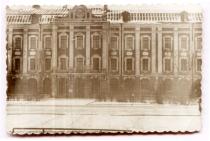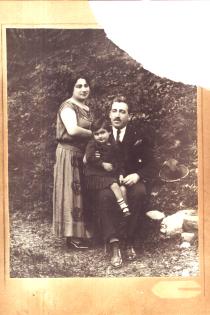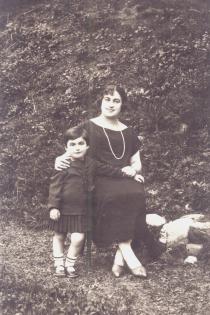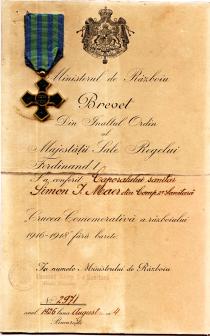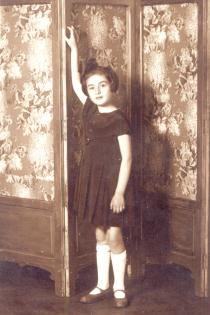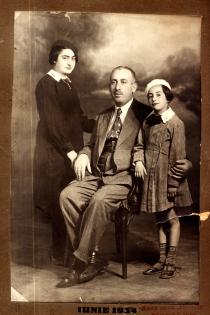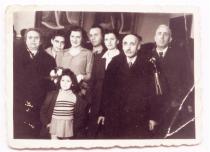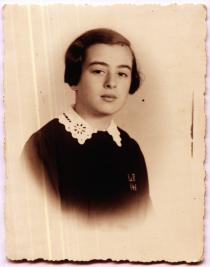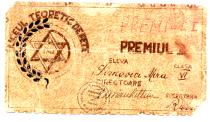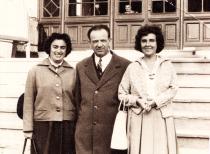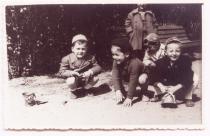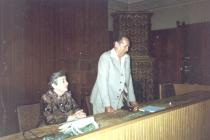This is Anicuta - my mother on the left, Maer - my father on the right, and Julieta - my sister. Julieta was 3 or 4 by then. Let's say, the photo was taken in 1923 or 1924. They went together to Zavoi park in Ramnicu Valcea, on the banks of the Olanesti, where there was always a photographer.
I was born in Ramnicu Valcea, in a family of five: my father, my mother, myself, my sister, and my paternal grandmother, the only grandparent that I met. My maternal grandmother, Miriam Sasson (nee Nahmias) was a Sephardi. The double s in her last name made Grandma so proud! My maternal grandfather's name was Moscu Sasson. The two of them were from Bucharest. All their children were born in Bucharest [in the 1870's and 1880's]. Naturally, my grandmother didn't have a job - this was the custom in those days. My grandfather was a sort of peddler. He caught tuberculosis and died at a relatively young age, in 1899. Grandma was left with six children, three boys and three girls. My mother, the youngest child, was six when her father died.
My grandmother's eldest daughter, Emilia, who was twenty years older than my mother, married an upholsterer and left to Ramnicu Valcea with him. He was a talented man and he made my grandmother and her other two daughters move to Ramnicu Valcea. The girls got married there and stayed there for a while. Eventually, my mother's sisters moved back to Bucharest with their husbands and children. My mother was the only one who remained in Ramnicu Valcea, where she got married in 1913.
My father's education consisted of two years in elementary school. But he was very clever and had an extraordinary business sense. He was born in Pitesti. His mother died when he was 9. Since the step-mother had no affection for him, his father, a tinsmith, sent him to Ramnicu Valcea, to work in the store of a Jewish tradesman. What kind of work can a 9-year-old do in a store? He became a sort of servant in the house. But he stayed with this tradesman until he grew up. After he got married, he fought in the Balkan War [on the Romanian side], in 1913. He came back, and then he left to fight for the reunification. .
He went back to Ramnicu Valcea after the war. The tradesman for whom he had worked, who hadn't paid him a dime, but had lodged and fed him, gave him a certain sum - I couldn't tell how much - which he used to open his own store. He became one of the richest tradesmen in Ramnicu Valcea, between 1920 and 1940. He had an interesting sign, 'The Country Hora'. [Ed. note: Hora is a Romanian folk dance with a slow rhythm in which the dancers hold hands to form a closed circle.] It was what we call today a general store: clothes, footwear, linen, notions. My father was a great businessman.We never owned any land in the countryside. All we had was our house. My father wasn't into farming. He didn't want to buy another house and rent it either. He was only into trade. My mother was a housewife.
On vacations we didn't go to the seaside, but my father would rent a carriage and take us to Calimanesti, or Olanesti, or Ocnele Mari. We left in the morning and came back in the evening. He took the carriage from a cabman's post, drove it home and took us wherever we wanted.

